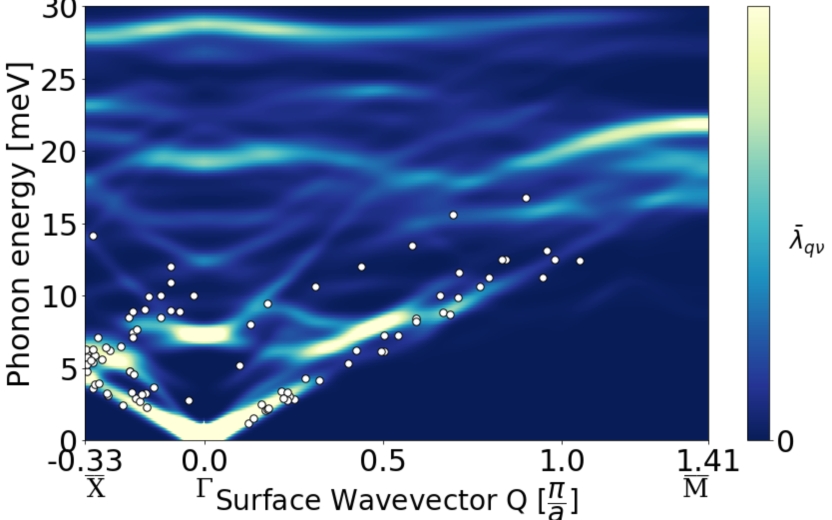A combined helium atom scattering and density-functional theory study of the Nb(100) surface oxide reconstruction: Phonon band structures and vibrational dynamics
Comparing measurements from Helium atom scattering (HAS) experiments with density-functional theory (DFT) calculations, we characterize the phonon band structure of the (3 × 1)-O surface reconstruction of Nb(100). The experimental and theoretical inelastic scattering strengths provide a measure of the strength of coupling between electrons and phonons, a quantity directly relevant in determining the superconducting performance of conventional superconductors. With DFT, we calculate interatomic force constants for bulk Nb, Nb(100), and the (3x1)-O Nb(100) oxide-reconstruction and are able to quantitatively characterize the oxide's impact on bond strengths at the surface, revealing the oxide reconstruction introduces strikingly strong bonds at the surface. These results identify the atomic scale structures responsible for passivating and stabilizing this niobium-oxide surface, and imply why this surface may be resistant to surface melting and alloying.
This paper describes the most thorough and extensive experimental study of the phonon dispersion curves at a Nb single crystal surface. These results represent, to our knowledge, the first phonon dispersion data for the oxide surface and the first ab initio calculation of the oxide’s surface phonons. The agreement between predicted and measured inelastic scattering events on this non-trivial surface establish that we are able to resolve surface electron-phonon coupling strengths, a quantity directly relevant in determining the superconducting performance of conventional superconductors. Furthermore, this paper provides atomic-scale information on bonds at the surface that can aid in the development of surface-deposition methods for niobium-based materials.
What overall goal of CBB does this result advance?
This study supplies fundamental information for further development and growth of materials used in superconducting radiofrequency cavities, with the goal of producing cavities producing higher efficiencies and stronger accelerating fields.
What potential applications could benefit from this advancement?
This advancement provides a foundational understanding of Nb surface oxide's chemistry, enabling material surfaces by design for SRF and accelerator applications.
Reference:
A. A. McMillan, C. J. Thompson, M. M. Kelley, J. D. Graham, T. A. Arias, and S. J. Sibener, “A combined helium atom scattering and density-functional theory study of the Nb(100) surface oxide reconstruction: Phonon band structures and vibrational dynamics,” J. Chem. Phys., vol. 156, no. 12, p. 124702, Mar. 2022, doi: 10.1063/5.0085653. [Online]. Available: https://aip.scitation.org/doi/10.1063/5.0085653

